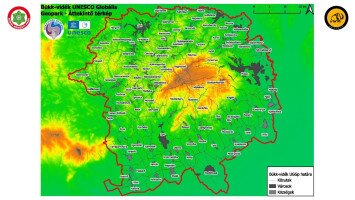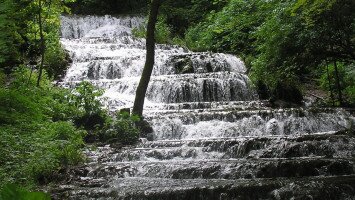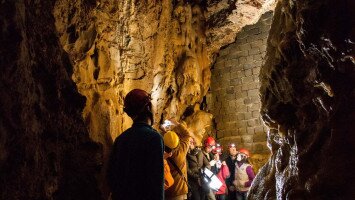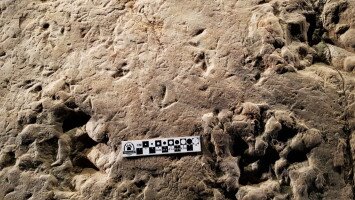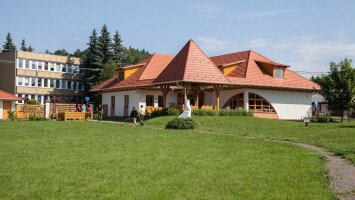
Bükkábrányi lignitbánya
Kérjük görgess
A miocén kor pannóniai korszakában kb. 8-5 millió évvel ezelőtt keletkezett a Bükkaljai
Lignit Formáció. A Tethys ősóceánból elkülönült északi tengermedencében (Parathetys, a
fokozatosan kiédesedő Pannon-beltengerben nagy vastagságot elérő, uralkodóan
finomtörmelékes képződmények agyag, homok keletkeztek. A lapos térszínen hatalmas
mocsarak területek el. A szubtrópusi, mocsári növényzet (mocsári ciprus, mamutfenyők,
lombos fák pl. éger, fűz) elpusztulásából, illetve nagy tömegű sás, nád felhalmozódásából
keletkezett a lignit. A lignitek a szénülés kezdeti fázisát képviselik, bennük a növényi
alkotórészek jól felismerhetők
Bükkábrányban a fejtett lignittelep tetején állva maradt fák, fosszilis erdő maradványait tárta
fel a bányászat. A lignitet fedő homok eltávolítása után kerültek napvilágra az eredeti
helyzetükben álló mamutfenyők, mocsárciprusok. Korabeli magasságuk mai analógiák
alapján elérhette a 30-40 métert is. Pusztulásukhoz egy hirtelen homokvihar vagy iszaplavina
vezethetett, amely mintegy 6 méteres magasságban elborította, így konzerválta a
mocsárciprusok törzsének alsó részét, míg a homok- vagy iszapréteg fölé eső részek
elpusztultak. Az 5-6 méter magas, 1,5-3 méteres átmérőjű tizenhat fatörzs eredeti, álló
helyzetében konzerválódott, de a hasonló leletektől eltérően nem szenesedtek el és nem is
kövesedtek meg. Így a bükkábrányi lelet őslénytani világszenzáció, hiszen szerves anyagként
maradt meg a 300-400 éves korukban elpusztult fák gesztje, kérge, gyökérzete és néhány ága
is.
A levegőn gyorsan kiszáradásnak indult fatörzseket konzerválás után a Miskolci Herman Ottó
Múzeumban és az Ipolytarnóci ősmaradványok természetvédelmi területen állították ki.

